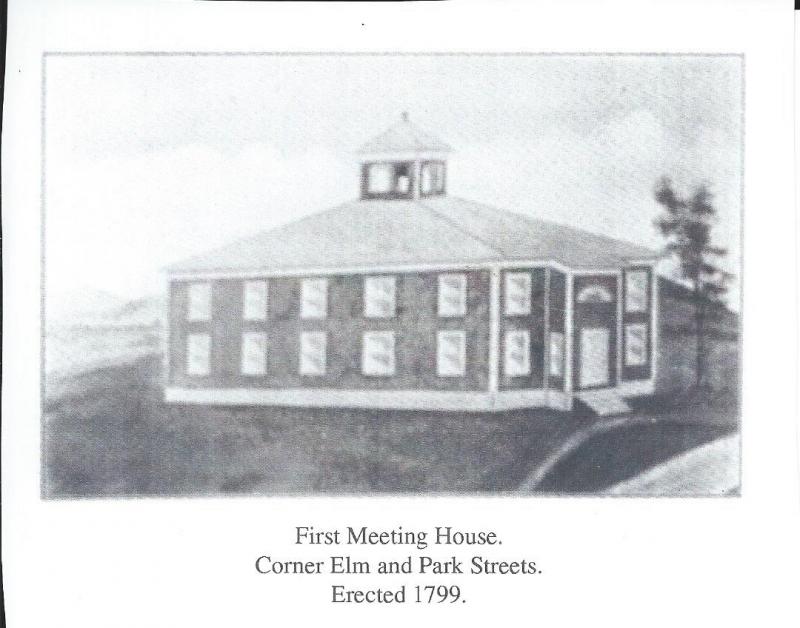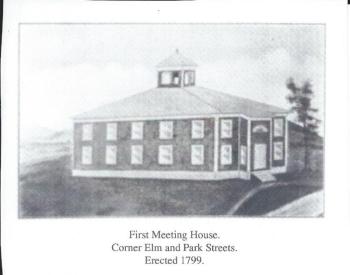When Camden paid a fine for having no minister preaching in town
 The Old Meeting House, which was once at the corner of Park and Elm streets in Camden.
The Old Meeting House, which was once at the corner of Park and Elm streets in Camden.
 St. Thomas Episcopal Church
St. Thomas Episcopal Church
 Our Lady of Good Hope Catholic Church
Our Lady of Good Hope Catholic Church
 Congregational Church
Congregational Church
 Chestnut Street Baptist Church, circa 1890
Chestnut Street Baptist Church, circa 1890
 The Episcopal Church, Camden
The Episcopal Church, Camden
 Methodist Church, 1899
Methodist Church, 1899
 Congregational Church
Congregational Church

 Our Lady of Good Hope, Camden
Our Lady of Good Hope, Camden
 The Cochran Fay House
The Cochran Fay House
 The Old Meeting House, which was once at the corner of Park and Elm streets in Camden.
The Old Meeting House, which was once at the corner of Park and Elm streets in Camden.
 St. Thomas Episcopal Church
St. Thomas Episcopal Church
 Our Lady of Good Hope Catholic Church
Our Lady of Good Hope Catholic Church
 Congregational Church
Congregational Church
 Chestnut Street Baptist Church, circa 1890
Chestnut Street Baptist Church, circa 1890
 The Episcopal Church, Camden
The Episcopal Church, Camden
 Methodist Church, 1899
Methodist Church, 1899
 Congregational Church
Congregational Church

 Our Lady of Good Hope, Camden
Our Lady of Good Hope, Camden
 The Cochran Fay House
The Cochran Fay House
As Rockport celebrates its Incorporation Anniversary of 125 years and Camden 225 years, we are reminded of how churches began in Camden. Little did we know that when we became Incorporated on February 17, 1791, as the 77nd town in Maine that would be fined for not having a minister and a church.
We were then in the county of Hancock and belonged to the Commonwealth of Massachusetts. There was a law that any town could be fined for not having a minister.
There was little preaching in Camden then, except occasionally when a “religious teacher” would stop while passing through. There were only about three ordained ministers within a 100-mile radius. The citizens drew up a petition to lay before the Supreme Court in Hallowell against paying the fine. However, a decision was handed down that Camden pay in full two pounds, 14 shillings and six pence.
Private individuals from Camden built the first Meeting House on what is now the corner of Park and Elm streets in 1799. Every person was required to pay taxes to support the place. We had 100 families, but no church of any denomination.
By 1804, Rev. Thomas Cochran, a graduate of Brown University began preaching and the following year they gave him a call to settle. An Ecclesiastical Council assembled in 1805 to form a Congregational Church and ordain a minister. It was a religious “high day”, but others celebrated by horse racing, drinking, etc. Rev. Cochran was paid $500 a year, but after he was here a few years people were unhappy with his preaching and stop attending services. He left town in 1814 but sued the town and was paid $1,400.
There was a sounding board in the meeting house for the acoustics, but some felt if the minister did not tell the truth, the board would fall on his head.
The present First Congregational Church was built in 1834, and remodeled several times. The Chestnut Street Baptist Church followed shortly thereafter.
The Universalist Church is now High Mountain Hall, but it was sold first by the Universalist to the Episcopal Church, which that church used until they built a nicer one in 1924 on Chestnut Street.
In very old pictures of Camden, the steeple is shown in the vicinity of Monument Square and people think it must be the Methodist Church, but that was built much later.
The Lady of Good Hope Catholic Church was built in 1909, because all Catholics had to go to Rockland to church. Some of the summer people had Irish help and donated money to build the church in Camden, so the “girls” wouldn’t be gone so long on Sunday and could be back at work to prepare and serve Sunday meals to the wealthy.
The first Methodist Church was near where the Opera House is today, but burned in the Great Fire of Camden.
Capt. William McGathry had his home on the spot where they were to build after the Great Fire, but after being the first recorded shipbuilder here around 1800, he had moved to Frankfort. The house was moved over to Sea Street, where it is today. They built a new Methodist Church, which now is a condo. We now have had for quite some time, a Christian Scientist Church on Central Street and a Seven Day Adventist Church on Old Camden Road.
All of the churches have been remodeled several times.
Barbara F. Dyer has lived in Camden all of her life, so far.
More Barbara Dyer
The demise of a Camden-built vessel
Camden’s wooden boat builders were perfectionists
Building wooden boats in Camden, many years ago
Socializing and such, before television
The first years of the Camden Snow Bowl
The many moods of Camden Harbor
Demise of the Camden steamboat wharf
Curtis Island Lighthouse - the sentinel of Camden Harbor
Event Date
Address
United States












































